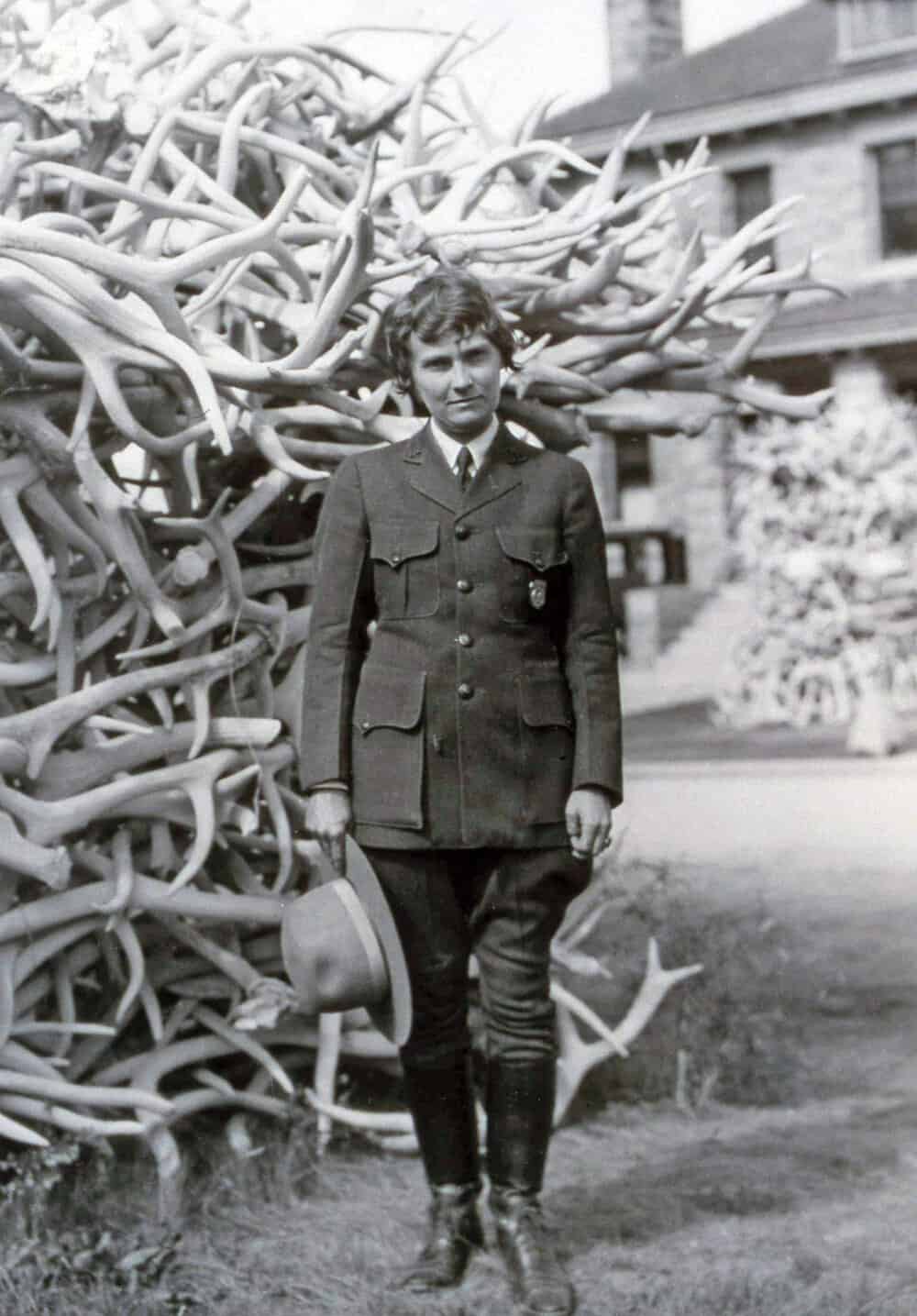Your cart is empty
WORDS BY Shane Mahoney
PHOTOS COURTESY OF Conservation Visions, Inc.
ORIGINALLY PUBLISHED IN MODERN HUNTSMAN, VOLUME FOUR: THE WOMEN’S ISSUE
History tells many lies. Some are deliberate; some merely the outcome of who is reporting the details and interpreting the relevance of past events. For much of human existence, there is no recorded history, save fragments of bone or ancient carvings, which we may interrogate but never fully understand. For the limited period from which written records do exist, the great preponderance of writing has been the work of men. In the vast majority of instances, these men were products of unmistakably patriarchal societies. No honest reflection on women’s historical contributions to society can ever disregard these facts. Regrettably, it may never be possible to rectify this distorted record. Certainly, the challenge increases the farther one back casts through time.
However, even through this obscuring veil, we cannot fail to glimpse a profound reality, one that freights significance across the horizons of time and place. Women and nature have always been perceived as linked in complex and fundamental ways, ways that must elude the eternally non-pregnant sex. Certainly, in many indigenous cultures, women were considered closer to nature, emblematic and even sacred because of their visceral connection to birth, life, and death, and because of their understandings of illness and the healing arts. Thus we see how the familiar term Mother Naturearose from within diverse cultural traditions that revered female fecundity and saw women as incarnations of a providing, life-giving Earth. There are many examples — the Greek deity Gaia, the Hindu goddess Durga, the African divinity Asase Ya, the Incan Pachamama, the NorseJord, the Thai Phra Mae Thorani, and the Celtic Danuare among the best known. These belief systems are global in their province, and distant in their reach. The various accounts are recorded in myths, hymns and folklore evidenced (on Mesopotamian tablets) as early as the third millennium BCE, demonstrating that the idea of nature as a creative, fertile and nurturing female god is deeply, profoundly rooted in human history. But men’s and women’s relationships to nature also held much in common.
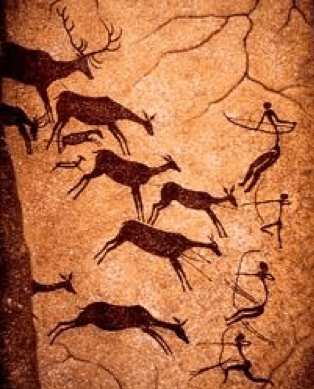
From a practical perspective, both sexes were entirely dependant on their ability to harvest life-sustaining resources, food especially, from the natural environment, and to avoid predators. Yet, despite these shared realities and despite sometimes conflicting evidence to support such a claim, male-articulated history has predominantly reinforced the concepts of “man the hunter” and “woman the gatherer.” This narrative has helped establish an enduring impression of an early global gender divide in how humans engaged with nature. While this view has heavily influenced our understanding of prehistoric people and our impressions of acceptable roles for men and women in modern times, it is almost certainly more a reflection of historical gender bias in reporting than an empirical truth, or even likelihood. Maybe it is an early example of fake news. For, regardless of the social impact of Robert Ardrey’s Hunting Hypothesisand other influential, male-dominated narratives of the 20th century, we now know that women in the past were not only viewed as nature goddesses, but they also hunted in prehistoric, ancient and more recent eras, as they do today.
Cave paintings, now theorized by some to have been primarily the creations of female artists, certainly depict women taking both active and supporting roles in hunting. One of the best-known illustrations comes from an approximately 12,000-year-old engraved antler, found in the Grotte de la Vache Cave in France, which depicts two men and a woman engaged in hunting deer. Archaeological evidence also indicates that from early times, Indian women hunted alongside men in that country. A symbolic tribal hunt that survives in India today, known as Jani Shikar, is a fascinating example of how women, hunting and even military victory are often closely associated in cultures. Jani Shikaroccurs once every 12 years to celebrate the 15th-century victory of the women of Rohtasgarh over the invading Mughals. On one specified day, indigenous women, dressed in men’s clothing, go out from their homes to hunt wild animals — mostly goats and hens in recent decades, because of conservation concerns for wild species. Hunting by women remains a more practical undertaking with the Australian Martu, a traditionally nomadic people who have lived in the Pilbara desert for at least 40,000 years. Martu women have always hunted extensively and continue to do so today.But women engagements with hunting were not restricted to prehistoric societies, nor are they restricted to surviving indigenous people today. In Ancient Egypt, queens often hunted from chariots, not for sustenance but for sport, and it was not unusual for women in that country to accompany their husbands on hunting excursions. There are, furthermore, many more recent historical references to European queens shooting tigers and panthers — pursuing, like their Egyptian counterparts, an aristocratic pastime. Queen Elizabeth was, in fact, upholding a centuries-old tradition of the British Royal Family when she engaged, admittedly from atop an elephant, a tiger hunt in Meghauli, Nepal, in 1961. It is not at all clear whether she would do so today.
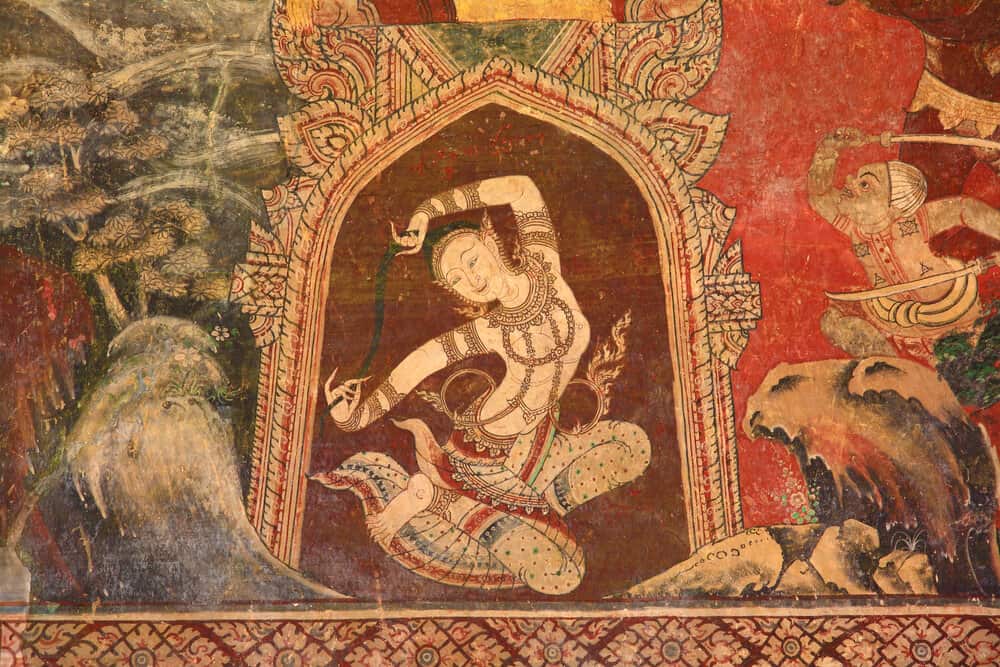
Given this history of female hunting, it is not surprising that, alongside the Earth-mother goddesses, in many early polytheistic religions there also existed female hunting deities, such as the Finnish Mielikki, the Slavic Devana, the Siberian Bugady Musun, the Egyptian Pakhet, and the Georgian Dali, a goddess still revered in that nation’s culture today, especially by elderly men. While many of these deities are described as skilled hunters, a more thorough examination of their surrounding mythologies reveals that hunting goddesses were often much more than that. Frequently, and across diverse cultures, these deities also laid down rules and proscriptions for specific hunting activities, forewarning harm to any human who dared defy them and thus facilitating some of the earliest prescriptions for active wildlife management and conservation.
Perhaps the most famous of these hunting goddesses is the Greek Artemis, also known as the Roman Diana. In his essay “Artemis: Goddess of Conservation,” the distinguished environmental historian J. Donald Hughes argues that Artemis was an iteration of “the mistress of game,” an early female archetype charged with the protection of wild animals from improperinjury or killing and the punishment of human hunters for the impropersuffering or deaths of wild animals. Overhunting was entirely proscribed by Artemis and her contemporaries. We might recall that the Greek mythological figure Orion, described as a giant huntsman, learned such lessons the hard way when he suggested that he might kill all the creatures on Earth. According to the legend that has survived to the present day, Artemis decisively responded by sending a scorpion to kill him.
Such combinations of hunting and protectionist tendencies were often widely displayed in mythological circles and frequently involved female deities. Sedna, the Inuit goddess of the sea, marine animals and sea-hunting, for example, was both predator and protector, not unlike the complex duality of intent expressed by respectful hunters today. While Sedna delivered sea mammals to the water’s surface where they might be killed by hungry hunters, she also required these hunters to have and show appropriate empathy and respect for the animals they harvested. For example, seals’ souls were believed to remain with their bodies for three days following death. Disregard for certain rituals and taboos during these three days would cause Sedna to curse the seal hunter, resulting in future hunting failures and starvation.
As the historical sketch reveals, female association with hunting has a long, deep history. It embraced both actual engagement and mythological invention, and transcended beyond the act of harvesting to legitimacy in prescribing early conservation practise, codes of restraint, and respectful protocols for the use of animals after death. Why, then, the common perception in modern society that hunting and conservation are the males’ domain? How and why did the older evidence for female engagement become subjugated and, seemingly, forgotten? Part of the answer lies in how human societies evolved over time and how gender roles, in general, became more rigidly defined, separated and restricted as our relationships with nature changed.
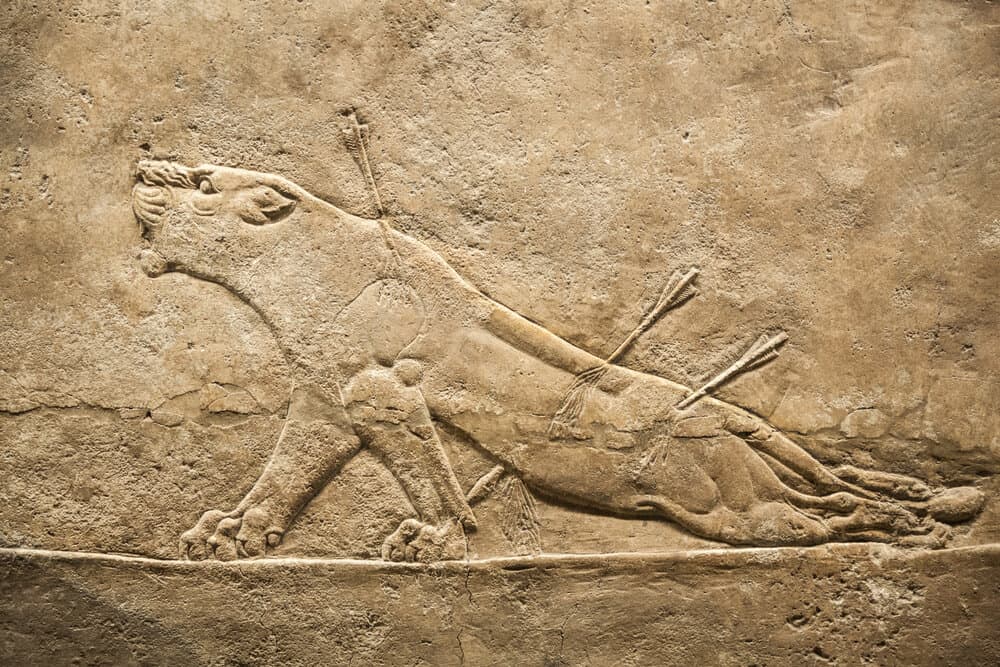
The rise of patriarchal societies developed gradually following the inception of agriculture and strongly diverted gender roles from those manifested in hunter-gatherer societies. This transition to food production, as opposed to wild harvesting, significantly altered our relationships with nature, moving us gradually away from direct engagement. In Western civilization, the transition to patriarchy was already apparent by about 3100 BCE, when female subordination was institutionalized in the earliest known written codes. This era also witnessed a societal shift from cosmogonies in which female goddesses held positions of power to the Old Testament covenant where the powers of creation and fertility moved from Goddess to God. This was a watershed change for women and for what our relationship to nature would become. Its momentum would last centuries, traverse continents, and encircle most of the world.
Thus, medieval Christian thinkers declared emphatically that nature had been created by God, and that nature’s place was on Earth, beneath the unchanging heavens and moon, with angels above her and demons and hell below. For the medieval mind, nature was no longer a goddess, or a deity in any disguise, in fact, but an earthly reality, often vulgar and problematic. She—for nature would remain feminized — significantly, in almost every culture, would no longer be revered for her wildness, mystery and beauty; instead, she would be perceived as something to be forcibly tamed, domesticated and ultimately controlled. Thus nature, in this patriarchal worldview, was to share a great deal in common with women in general — an alignment of the maligned, so to speak — and much in contradistinction to the earlier, exalted positions both held in older and more natural worldviews.
From the last century of the Middle Ages onward, restrictions on women’s lives and roles in society spread outward from Europe as Christian orthodoxy sailed the world’s oceans, powered by the winds of colonialism, religious missionary zeal and imperialistic ambition. Thus, in growing parts of the world, the average women’s lives were increasingly governed by prohibition, restraint, and what the historian Chris Middleton has referred to as “the essential model of female subservience.” Enforced by religious authorities, this feminine ideal had already permeated most of European society and was an important principle of the Puritan Movement of the late 16th century, which deeply influenced, eventually, the social, political, ethical and theological ideals of North Americans.
Thus, with the exception of some indigenous and local cultures that escaped or resisted this European influence, pre-industrial revolution women were increasingly discouraged from unfeminine engagements with nature, and especially with wild nature. Moreover, they were discouraged from even thinking about issues outside the domestic sphere and were certainly not given license to discuss matters of public policy. Such matters included those related to environmental degradation, such as timber depletion and forest conservation, which were already topics of public (male) concern in England as early as 1662.
Certainly, the Industrial Revolution ushered in many social and environmental changes, including much-increased mining and deforestation. Socially, rapid urbanization was occurring, drawing people from the countryside and rural ways of life. As a result, working outside the home had become an economic necessity for many women, single as well as married. This reality was gradually accepted while often frowned upon by both sexes. While such outside employment certainly heralded other opportunities for women in various social spheres, hunting and other outdoor engagements remained very much the domain of men. But in some ways, the chains were already broken. Some women refused to be subjugated by societal ideals of appropriate female behavior respecting nature, as in other domains; rather, they challenged expectations, displaying the “eccentricity of conduct” identified by Mary Zeiss Stange in her essay “Women and Hunting in the (American) West.” Both huntresses and conservation activists emerged. Their stories are varied — many are exceptional; all are important. Too many are unknown.
Many of us are familiar, however, with the story of the great sharpshooter Annie Oakley, perhaps the most famous early American huntress. Born into poverty in 1860 in western Ohio, Annie began trapping and hunting at the age of seven to support her widowed mother and siblings. By age fifteen, revenues from her shooting skills had paid off the mortgage on her mother’s farm. Yet, despite her celebrity as a sharpshooting star, it is well-known that she much preferred hunting to commercial shooting. A philanthropist and women’s advocate until her death in 1926, Annie Oakley is too little recognized for her efforts on behalf of orphans and women’s rights and equality. But there can be no doubt that rifle in hand, she was the equal, if not the better, of any man. Her skill as a marksperson were almost beyond belief.
Remarkable, too, was Paulina Brandreth. Born in the Adirondack Mountains in 1885, Paulina published her first hunting story in Field and Stream Magazineat the age of nine (without using her name), and later published one of the first major books on deer hunting, Trails of Enchantment, in 1930, under the pen name Paul Brandreth. It is still available. It is still remarkable. Due to her nature as an accomplished photographer and naturalist, Brandreth’s book contains wonderful, startling photos and remarkably detailed information on white-tailed deer biology, as well as conservation commentary. Paulina hunted alongside famous male hunters including Roy Chapman Andrews and Reuben Cary, though not all her male hunting companions may have known her true gender, as she purposely dressed as a man when afield. For those who did know, it really made no difference. The way she hunted made that clear enough. Accomplished female hunters and outdoor writers were not restricted to America, of course. Numerous Englishwomen also became well known for their hunting exploits, cousins Agnes and Cecily Herbert among them. These women hunted big game on three continents between 1906 and 1911. On their first safari, to Somaliland, the women made a bet with another all-male safari group that they would out-hunt them. Their triumphant win is described in Agnes’ first book, Two Dianas in Somaliland, published in 1908. After reading a later book describing their experiences in Alaska, a female friend remarked that “she didn’t like so much killing.” Agnes, a journalist, famously replied: “She may be right, and books on sport and adventure are only for men and boys, the sterner sex. If, therefore, you, reader o’mine, should regard all forms of taking life as unwomanly, read no more.” Such forthright sentiments (and personalities) were obviously shared by other women hunters of that era.
Lady Catherine Minna Jenkins, an Englishwoman who hunted tigers in India, numerous game species in Somalia, and a variety of mountain ungulates — including blue sheep, Tibetan argali, gazelles, urial, barasingha, ibex — and marched on a grueling trip in the mountains of Tibet, was among them. Jenkins recorded the latter experience, which she undertook without her husband, in her book Sport and Travel in Both Tibets, published in 1909. No one familiar with this account can be unimpressed with the sheer physicality and challenge of the adventure, nor with the independence, determination and mental fortitude of its author. Reading this text, it is indeed hard to reconcile how women hunters could ever have been considered “less” than their male counterparts.While the exploits of these early women hunters are extraordinary in themselves, what is equally significant are the efforts they made, via their writings and public appearances, to bring their experiences to the world. They were not only proud of what they did but clearly wanted the world to know. Undoubtedly, they also hoped to inspire other women to challenge the expectations and boundaries imposed by society at that time. And just as these pioneering women defied social conventions to become accomplished shooters and hunters, so too did their female contemporaries who joined and helped define the newly emerging field of environmental conservation.
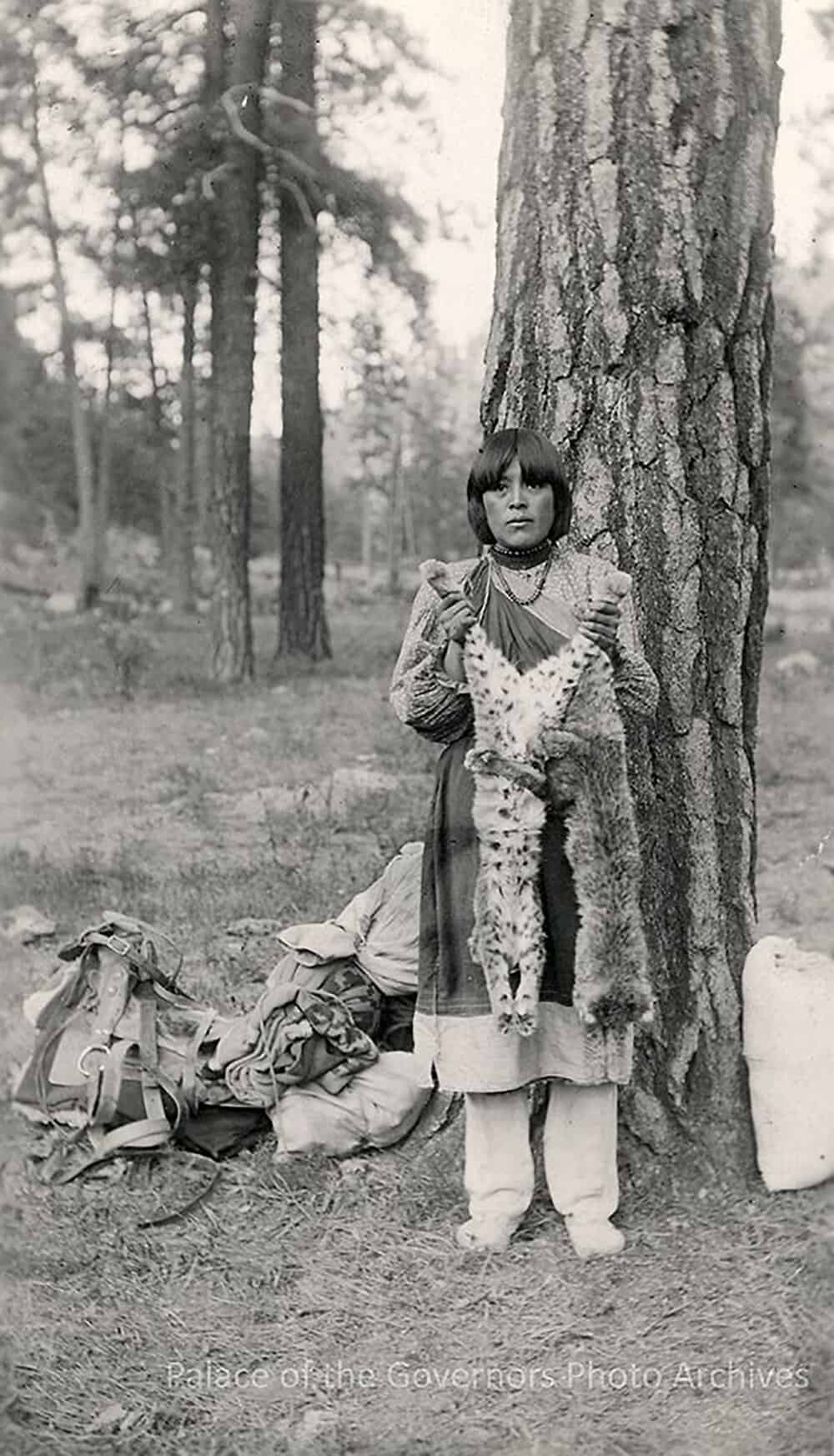
While it is always difficult to define exactly when and where a broad social movement arises, there can be no doubt that by the late 19th and early 20th centuries, discussions of natural resource use and conservation were heavily influencing the American political landscape. The efforts of men in the leadership of this movement are well and rightly recognized, with individuals such as George Perkins Marsh, John Muir, Henry David Thoreau, George Bird Grinnell, Theodore Roosevelt, Gifford Pinchot, Edward Abbey and Aldo Leopold among them. Women working for environmental causes, however, were given much less voice and often faced tremendous obstacles to recognition in academic and professional circles. Not surprisingly, their historic references are far fewer and less prominent than those of their male contemporaries. Some of these women were engaged in courageous and very public efforts during the Progressive Era of American social reform, though they might not have been noticed. And yet, women were responsible for important environmental and conservation achievements.
In fact, women’s many and varied contributions to nature study and conservation represent a diverse and meaningful tradition, all the more remarkable when considered against the backdrop of men’s dominance and recognition in these fields. Some of the best and most inspiring examples come from America.By the late 1800s, fashionable North American women began wearing hats decorated with feathers, wings, and even whole, taxidermied birds. To supply this market, plume hunters killed and skinned vast numbers of mature birds, while multitudes of orphaned young were left to starve or become prey. By 1886, millions of North American birds were being slaughtered annually to supply the milliners (hat makers) trade. Harriet Lawrence Hemenway and her cousin Minna Hall, both Boston socialites, decided to end the practice and tackle what had become a highly lucrative industry. At that time, a pound of egrets’ feathers was worth more than a pound of gold! They believed the birds had more value alive than dead and began a revolt, attacking the slaughter by mobilizing a boycott of the feather trade.
Other women followed, founding a formidable movement that would eventually end the slaughter. Their efforts helped prompt the formation of the National Audubon Society, and would lead to the passage of the Weeks-McLean Act, later replaced by the Migratory Bird Treaty Act. That legislation, beyond any doubt, represents one of the most far-reaching and effective institutions in the history of North American conservation. Other women activists were to similarly affect conservation policies and legislation at a grand scale. There are many examples. Rosalie Barrow Edge was born into New York City’s high society in 1877 and became active in the women’s suffrage movement. In the 1920s, she developed an interest in bird watching in Central Park, which deepened her appreciation for wildlife and the environment. She became a conservation activist upon hearing of the killing of 70,000 bald eagles in Alaska, which occurred without intervention from any concerned party, and without consequence for those responsible. In 1929, she founded the Emergency Conservation Committee to expose the shortcomings of the American conservation establishment as it existed at that time. Her voice and efforts were relentless. In 1934, she founded and funded the first nature preserve for birds of prey at Hawk Mountain Sanctuary in the Appalachian Mountains. In 1948, The New Yorker called her “the most honest, unselfish, indomitable hellcat in the history of conservation.” Sometimes, everything is in a name.
Margaret “Mardy” Murie was dubbed the “Grandmother of the Conservation Movement” by both the Sierra Club and the Wilderness Society. Born in 1902 in Seattle, Washington, she later moved to Alaska with her family and became the first woman to graduate from the Alaska Agricultural College and School of Mines, with a degree in business administration. Despite her business degree, Murie’s interests quickly turned to ecology. From 1927 onward, she worked alongside her husband, Olaus, in Wyoming, studying elk, sheep and other animals in the Greater Yellowstone ecosystem. Murie, along with her husband, accomplished sentinel wilderness victories with the establishment of Alaska’s Arctic National Wildlife Refuge and the signing of the Wilderness Act. Following her husband’s death in 1963, Murie returned to Alaska alone. There, she worked on the Alaska National Interest Lands Conservation Act. Signed into law in 1980, that legislation set aside 104,000,000 acres of land in Alaska and doubled the size of the Arctic National Wildlife Refuge. In her 1977 congressional testimony for the Alaska Lands Bill, she famously said: “I hope the United States of America is not so rich that she can afford to let these wildernesses pass by, or so poor she cannot afford to keep them.” Few citizens, men or women, have ever more effectively embodied the notions of service to conservation, love of nature, and civic inspiration for wildlife and the environment than Margaret Thomas Murie. She died at 101 years of age in Moose, Wyoming, in 2003. It is unclear whether the name of the community influenced her decision to reside there. Herma Albertson Baggley, born in Iowa in 1896, developed a love of nature and a passion for plant life after spending considerable time touring Yellowstone National Park and surrounding areas. Originally a schoolteacher, she returned to the University of Idaho in 1921 and earned a master’s degree in botany. Longing to return to Yellowstone, she worked seasonally at Old Faithful in 1929 and 1930, and in 1931 accepted a full-time ranger-naturalist position at the park, becoming the first female naturalist to work for the National Park Service. Like other women leaders in conservation, Baggley believed it was important to teach others about the natural world so they might be convinced to both appreciate and conserve it. Inquisitive and highly motivated, she was known to be more knowledgeable about Yellowstone than most of her male counterparts, and her tours and talks were famously attended by hundreds of park visitors each day. She is credited with the discovery of the rubber boa snake, played a significant part in nature trail development within the Yellowstone park, and in 1936 co-authored Plants of Yellowstone National Park, a guidebook still used by naturalists and park visitors today. While her role in history may seem somewhat modest, Baggley’s leadership and enthusiasm helped pave the way for many women who followed her, including Fran P. Mainella who, in 2001, became the first woman to be appointed Director of the US National Park Service.
While all these women leaders were to have lasting impact on conservation, it may well be Rachel Carson who is the best-remembered, and perhaps most-admired woman conservationist in North American history. Considered by many to be the founder of modern environmentalism, her story of personal courage and professional integrity remains an inspiration for all who seek to make a difference for the natural world. Born in 1907 in rural Springfield, Pennsylvania, Rachel Carson spent a childhood exploring the woodlots and agricultural landscapes surrounding her home and developed a lifelong love of nature. It was something she held in common with her mother, who helped instill in her daughter a deep respect and caring for all wild things. A natural and gifted writer, Carson would be educated as an ecologist, receiving her MA in zoology from Johns Hopkins University in 1932. In 1936, she began a 15-year career as a Federal US scientist (initially with the Bureau of Fisheries), rising eventually to become Editor-In-Chief of all publications for the US Fish and Wildlife Service. Like other women leaders of the conservation movement, Carson was drawn, especially in her early career, toward teaching people about the wonder and beauty of the natural world. Perhaps not surprisingly, therefore, once she became aware of the environmental damage of chemical pesticides that had come into widespread use after World War II, her focus shifted to warning the public about the dangerous and long-term effects of these poisons. Her best-selling book, Silent Spring(1962), challenged the practices of the agricultural industry, and of scientists and government officials, and ultimately called for a change in the way humans viewed nature and their responsibilities to it. Though many corporate and academic leaders attempted to discredit her as a scientist (because of her gender), her quiet, resolute advocacy for nature and for sustainable and healthy environmental practices would lead to a ban on the harmful pesticide DDT and, eventually, to the development of the US Environmental Protection Agency. Today, this institution is still often referred to as “the extended shadow of Rachel Carson.”
Nothing more need be said of the lasting conservation influence of this unique individual who, even in her photographs, exudes a quiet, caring determination.The legacy of women activism in and for nature continues to find expression in North America today. In the US more than 11% of registered hunters are women, their numbers having grown by an incredible 85% between 2001 and 2013. Furthermore, one only has to attend any wildlife or conservation convention to see that women’s numbers are rising rapidly in environmental disciplines across the board. More women today hold leadership positions in conservation than ever before and are demonstrating their capacity as experts, educators and innovators to the benefit of their organizations, society at large and the natural world. Women and women’s movements are making great contributions toward preserving and protecting natural resources, fighting for action on climate change, leading research programs, and educating the public on why all citizens should care about and for wild species and wild places, and for the caring and respectful treatment of all animals, domestic and wild. Indeed, much has changed, and much of it for the better. Surely, early women hunters and conservation activists would be surprised and pleased. Yet, the path forward is not always an easy one. Fifty years passed between the efforts of Harriet Lawrence Hemenway and her cousin Minna Hall to close down the bird feather trade and Rachel Carson’s celebrated fight against pesticides. Carson was still confronted with male-dominated systems seeking to discredit her work. Today, we still hear echoes of such thinking: “Can a woman handle harsh field conditions as well as a man?” “Is a woman strong enough to handle a wild animal?” “Are women too emotional to make practical decisions?” “Should women engage in animal harvesting?” It seems women are still held to a different standard, despite many advances toward gender equality. That is why it’s so important, as we focus on the future, that we also work to improve the accuracy of the historical narratives that still influence modern thought. History does tell many lies, but it also harbors many truths. Discovery of both is critical to human progress. The truth is, we all remain inextricably linked with nature’s systems and her consequential realities; the human species and all others. This is the common ecology we all share; it is the cosmic force that binds, and the mystery that embraces us all. Regardless of gender, regardless of what DNA we possess, each and every one of us, cricket and mouse, gorilla, butterfly and human child, remains entirely dependent on a world that is sustaining for us. No species stands beyond nature’s pale. One’s gender brokers no favors from nature’s laws. This reality was not a matter of debate for hunter-gatherer societies; its force was manifest in every waking moment, in every sleepless night. And in that world, women were viewed as life-givers, fertility goddesses and hunters, possessed of special intimacies in the discourse of creation and perpetual life. Such derivations were in recognition of the capacities of women — emotional, intellectual and physical capacities that define and underlay unique opportunities to engage with nature’s mysteries and our human dilemmas within that world. Such capacities emerged throughout time, despite deeply embedded hostilities and obstacles to their expression, illuminating both the female human empathy for nature as well as purposeful engagement in the life and death practices that underlie the fabric of human existence.

